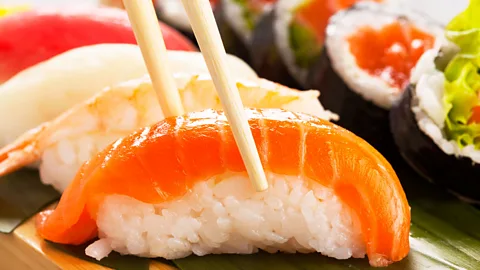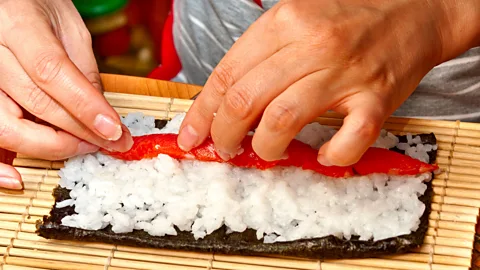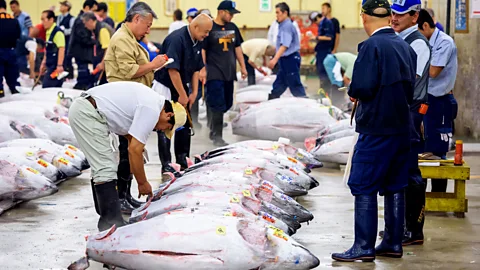Sushi in Tokyo is no longer a man's game
 gkrphoto/iStock
gkrphoto/iStockWith a serious dose of charm, this Tokyo restaurant – run exclusively by women – is breaking into Japan’s male-dominated sushi world.
Behind the counter at Nadeshico Sushi, young women dressed in traditional Japanese happi coats, rolled, cut and served sushi while smiling and chatting with their customers. Their cheerful nature brightened up the room, and the diners – the majority of whom were either young Japanese guys or curious foreigners – couldn’t help but be charmed.
In Japan, women aren’t traditionally trained to become sushi masters. There are numerous myths as to why, the most common being that their warm hands affect the quality of the raw fish, their hands are too small and their makeup distorts their sense of smell. But this unprecedented sushi restaurant, tucked down a side street in Tokyo’s Akihabara district, is breaking into Japan’s male-dominated sushi world by having women run the show.
 Urbanmyth/Alamy
Urbanmyth/AlamyManager Yuki Chizui has always had a passion for sushi. As a student, she worked in a restaurant welcoming customers and showing them to their seats. But all the while, she longed to join the team actually making the food. She spent six years patiently observing the sushi chefs from afar before finally getting the chance to realise her dream.
In 2010, Chizui saw a job posting for female sushi makers at Nadeshico. With Akihabara being home to maid cafes – themed dining spots where waitresses dress in maid costumes – owner Kazuya Nishikiori hoped to capitalise on the neighbourhood’s “cute girl” culture and give women an equal opportunity by creating a female-run sushi place.
Chizui’s immediate reaction was a mixture of shock that such an establishment existed and excitement at the prospect of working there. She jumped at the opportunity and was soon hired as restaurant manager and trained in the art of sushi.
 whitewish/iStock
whitewish/iStockTypically, a sushi apprentice trains with a professional chef for about 10 years. However, Chizui spent just two weeks learning beside a sushi master, where she crammed as much knowledge – from how to prepare fish to learning what seasonings to use – into her head as possible. This crash course was all the master would agree to. The rest, she had to figure out on her own.
Chizui then hired and trained a number of girls as sushi preparers. But, as women working in a man’s world, they had many challenges to overcome.
 mix7777/iStock
mix7777/iStock“Appealing to Japanese people is very hard,” admitted Chizui. The older generations are especially known to be rigid in their ways. “Instead, we try to attract foreign visitors and even plan to hold sushi making classes for them,” she added.
Additionally, getting fresh fish was difficult when the restaurant first opened in August 2010. Tsukiji Fish Market in downtown Tokyo is run almost entirely by men. As a young female searching through the mounds of seafood, Chizui wasn’t taken seriously. Though, through a Facebook friend, she was able to link up with a woman-owned fishing boat in Yamaguchi Prefecture, who offered her a weekly supply of fish for the restaurant.
 Sean Pavone/Alamy
Sean Pavone/AlamyAlthough Nadeshico Sushi may seem like a novelty, the women who work there are serious about their jobs. No matter the challenges, they will always push the restaurant’s message of, “Of course, girls can do it, too”. And little by little, they hope to etch away at the gender gap that’s so prevalent in Japan.
Celia Knox shares up-to-the-minute snapshots, trends and goings-on from the capital of Japan. Follow along on Twitter and Instagram via #BBCLocalite.
